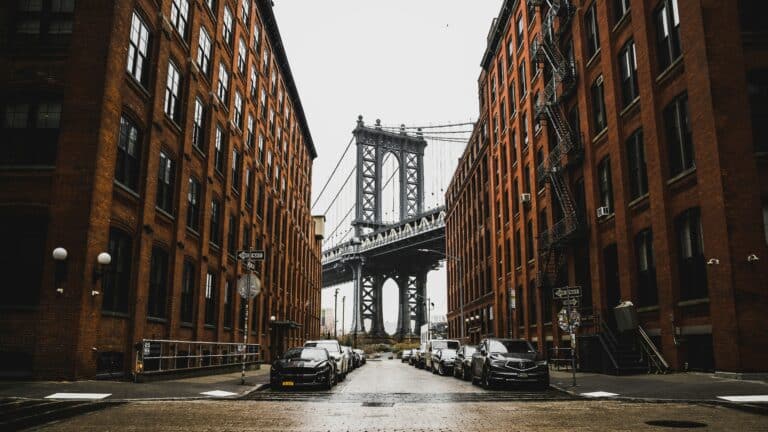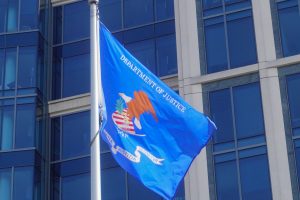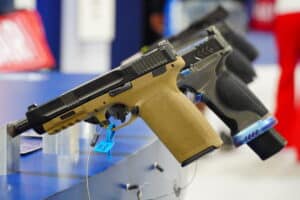We have another post-Bruen federal gun ruling. It may be the most significant one yet.
Not only will Judge Glenn Suddaby’s temporary restraining order against New York’s latest gun restrictions impact millions of people who live in that state, but it will likely also influence a host of other gun litigation across the country.
Suddaby’s opinion is one of the most expansive attempts to apply the Supreme Court’s new Bruen standard, which requires any law that implicates a Second Amendment right to closely match a historical analogue in order to survive scrutiny. The judge performed his own investigation of gun statutes from the period of the founding through the end of the Civil War and adoption of the 14th Amendment in 1868. He found there was little or no historical support for a majority of the most controversial provisions of New York’s law.
Suddaby gutted the “good moral character” gun-carry permitting clause. He blocked the social media check requirement, family information disclosure, and in-person application process. He also forced New York to allow licensed gun carriers into Times Square, on public transit, at venues that serve alcohol, private businesses that don’t have a “no-gun” policy, and entertainment venues.
“Although historical analogues certainly exist prohibiting carrying firearms in specific places, no historical analogues have been provided prohibiting carrying firearms virtually everywhere, as the CCIA does,” Suddaby wrote.
But he upheld a number of provisions as well. He said New York could restrict guns at polling places, schools, government facilities, public protests, and areas holding special government events.
For New York’s ban on guns in schools or government buildings, such as courthouses, Suddaby declined to look for historical examples of similar prohibitions. Instead, he cited the Supreme Court’s opinion in Heller as proof enough the provisions are constitutional.
“Fortunately, the Court need not collect in a footnote citations to the many historical analogues restraining the right to carry a firearm in ‘any place owned or under the control of federal, state or local government, for the purpose of government administration, including courts’ as stated in paragraph’ 2(a)’ of Section 4,” Suddaby wrote. “This is because the Supreme Court has already expressly acknowledged the permissibility of these restrictions.”
His reliance on dicta from Heller, which is non-binding, provides limited insight into how well those restrictions actually line up with the historical record. But it may tell us that federal judges are uninterested in finding out if they think the Supreme Court wants them to do so.
Either way, Suddaby was also able to identify some restrictions from that time he felt were close enough parallels to a handful of restrictions in New York’s law that they could stand. Those areas of his opinion, especially the ones where he places special exceptions on the upheld provisions, may offer the most insight into how future gun cases are decided under Bruen. That’s mainly because those are the areas where he puts the theory of historical analogues into practice.
His examination of the state’s ban on guns in places of worship is particularly instructive.
“Based on the historical analogues, it is permissible for New York State to generally restrict concealed carry in ‘any place of worship or religious observation’ (as contained in paragraph ‘2(c)’ of Section 4),” Suddaby wrote. “The Court emphasizes the word ‘generally’ because, of the six historical analogues the Court has located, half of them contain one or more of the following four exceptions: (1) for those bound by “duty” to bear arms at the place of worship; (2) for those possessing “good and sufficient cause” to carry a gun at the place of worship; (3) for those serving as “peace officers” at the place of worship; and (4) for those for whom the place of worship is ‘his own premises.'”
He concluded the historical record suggests there is a tradition of limiting guns in churches, but there’s also “a tradition of permitting an exception to this prohibition for those persons who have been tasked with the duty to keep the peace at the place of worship.” His solution is to limit enforcement of the prohibition to allow for that.
Suddaby’s approach differs from that of District Judge David Counts of Western Texas, who recently struck down the federal ban on those facing felony indictments from receiving guns but upheld the one on convicted felons. Counts’ analysis began at the same point as Suddaby’s, and he struck down the indictment-based ban for the same basic reason Suddaby blocked most of New York’s law: there is no historical basis for it.
However, Counts upheld the convicted felony gun ban using different reasoning than Suddaby. Where Suddaby cited specific gun laws from near the period required under Bruen, Counts instead looked at how some groups have been traditionally excluded from “the people,” including convicted felons.
“Indeed, there was a ‘longstanding’ historical tradition from the time of ratification that those convicted of a crime could be excluded from the right to vote,” Counts wrote. “For example, one year after the Second Amendment’s ratification, Kentucky’s Constitution stated, ‘[l]aws shall be made to exclude from… suffrage those who thereafter be convicted of bribery, perjury, forgery, or other high crimes and misdemeanors.’ Vermont’s Constitution followed one year later, authorizing the removal of voting rights from those engaged in bribery or corruption during elections. As of 2022, only two states and the District of Columbia do not restrict felons’ voting rights.”
While that approach may gain traction, it’s also a more roundabout one than what Suddaby uses. And, even though Suddaby’s own analysis has flaws–namely relying mostly on late 19th-century gun laws, it’s much more in line with what the Supreme Court seemed to be looking for in Bruen.
Suddaby’s opinion may end up more influential for purely practical reasons as well. That’s because he took it upon himself to search out potential historical analogues for New York’s restrictions when the state didn’t offer up any.
“[T]he State Defendants had a reasonable opportunity, in their opposition papers and oral argument, to advise the Court of all historical statutes they believe to be analogues (including those presented to the Court in Antonyuk I),” he wrote. “They simply chose not to do so (possibly because they knew the Court would take notice of those statutes anyway, as it has done).”
So, now that work has at least been partially done for all sorts of potential conflict points in future cases. Suddaby has identified historical analogues for a host of gun-free zone regulations or permit processing requirements and developed reasoning for why they are a close match to the modern provisions. He even went further and explained how modern “good character” requirements for permitting and gun bans in churches could be modified to better match their historical counterparts.
It’s likely Suddaby’s analysis in these areas is not exhaustive, and others will find further historical examples of the restrictions in question. It’s also certain his reasoning for why the laws he did highlight are proper analogues for the restrictions he upheld (and vice versa) will produce controversy. But, as an early attempt at applying the Bruen standard, his opinion will undoubtedly be closely studied by litigators and judges alike across the federal judicial system.







Only Members can view comments. Become a member today to join the conversation.